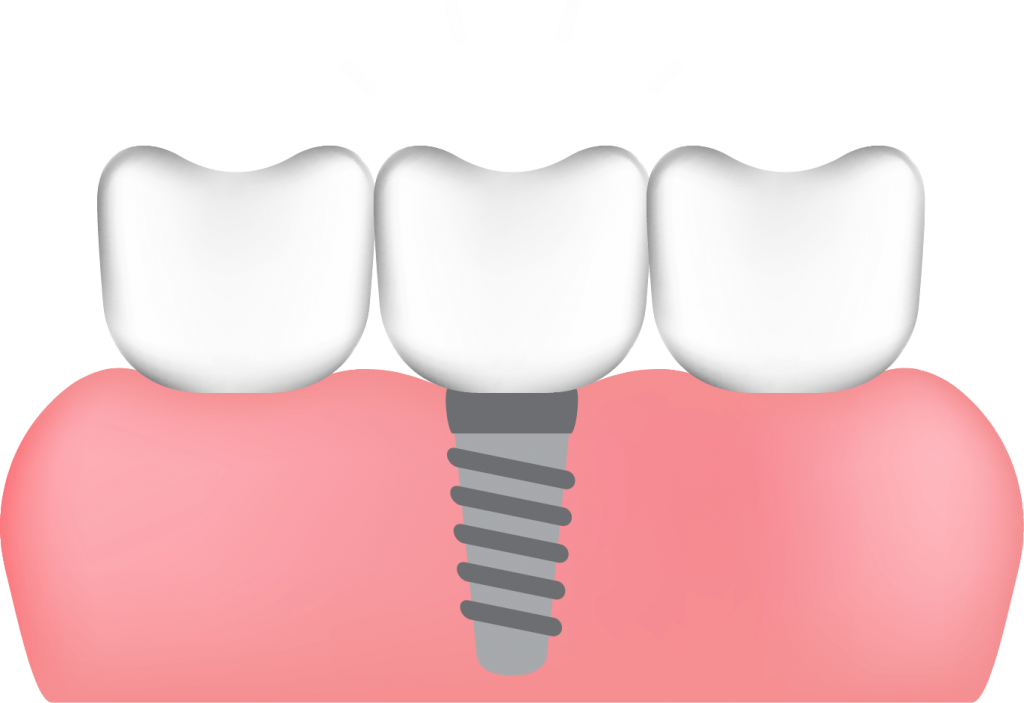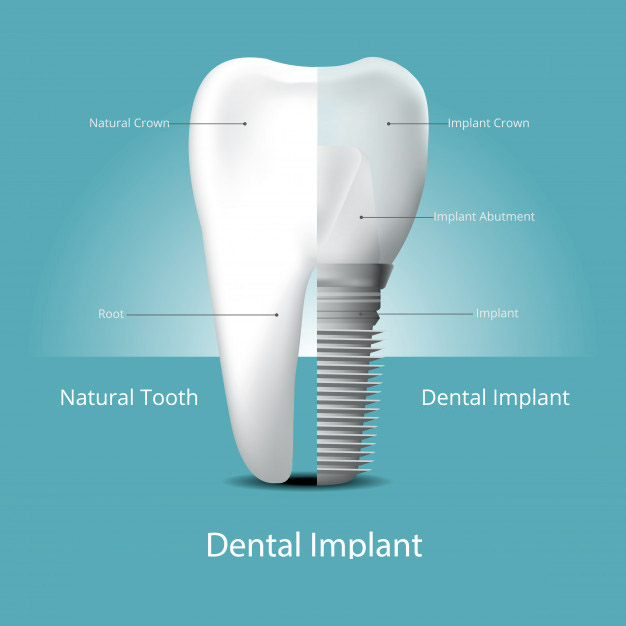 Single tooth Implant
Single tooth Implant
Single Dental implant are a popular and effective way to replace missing tooth and is designed to blend in with your other teeth. This is an excellent long-term option for restoring your smile. In fact, the development and use of implant is one of the biggest advances in dentistry in the past 40 years.
Dental implant are made up of titanium and other materials that are compatible with the human body. They are posts that are surgically placed in the upper or lower jaw, where they function as a sturdy anchor for replacement teeth. There are multiple reasons why teeth are lost, such as extraction procedures or gum disease, and although you may not think twice about the empty gap left behind,
A single tooth implant is an ideal solution for individuals who are missing individual teeth. The replaced tooth will look and function like a natural tooth. You will help be able to regain confidence in your smile.Speak and smile again without worrying about your missing tooth.


Why a Single Dental Implant?
An implant replaces a missing tooth and is an independent restoration. It has the advantage that it stimulates bone to stay and get stronger. This is something that will not happen with any other option, thus providing the patient with a natural feeling fully functional mouth.
if you have lost your entire tooth, including its root, then the effect is more severe. Your teeth’s roots effectively anchor it in place in your jawbone, providing stability and strength, and full root loss can cause bone to recede over time. This can cause any remaining teeth to shift or potential be lost as well.
The benefits if one tooth implant
The benefits of having teeth implants is that you will be able to eat and chew with your restored teeth as you would with a natural tooth, your smile will look natural and attractive and your jawbone will not recede over time due to the implant being firmly positioned inside, like the root of a tooth.
- Single-tooth implant do not require the removal of healthy tooth structure.
- Dental implant guard against the bone loss that results when a tooth is extracted or falls out.
- Implant are able to be placed without affecting the neighboring teeth.
- It helps jawbone to remain intact, well-supported, and healthy.
- Maintaining the integrity of your dental and jaw structure.
- Single implants are easier to keep clean.
- implant are arguably the most durable of any type of dental restoration currently available.
- there is no need to worry about Implant slipping or moving around when you eat, speak, laugh or sneeze.
- A smile that improves your confidence.
How do Single-Tooth Dental Implants Work?
The implant is first placed into the jaw. It looks like a screw, and initially it will be covered by a temporary tooth replacement. Once the implant and bone are able to bond together and form an anchor, the artificial tooth will be placed and restore your natural smile.
Once it has been placed, the jaw bone and gum tissue close around it, creating an extremely secure foundation for the visible part of the solution. Your new and improved smile will enhance your ability to chew and speak. The implant will look so natural that no one will be able to tell that you lost a tooth, not even you! The natural and streamlined feel of an implant allows you to have a complete, natural-looking smile. Enjoy the confidence that comes with a brand new tooth!
Single tooth dental implants are a standalone solution for a gap in your smile. They are comprised of two main elements that are connected using a special fixing.
For patients looking for quality implants dentistry at Replace Roots, dental implants can provide exceptional results.
Contact Us for Your Implant Consultation!
Who is a Candidate for Dental Implants?
Anyone who can go through a routine oral surgery procedure can get dental implants. The main concerns are healthy gums and bone growth for the implants to adhere to. Success rates of dental implants vary, depending on where in the jaw the implants are placed but, in general, dental implants have a success rate of up to 98%. With proper care, implants can last a lifetime.
Heavy smokers and patients with certain medical conditions (including heart disease and diabetes) should be evaluated by their dentist before considering an implant procedure. But many patients with medical conditions are able to get implants with no adverse effects.
Severe loss of bone may make a person not a candidate for dental implants. This is usually due to not treating extensive tooth loss for a very long time. Although there are many grafting procedures to correct bone loss there are situations where it is impossible or too surgically risky to graft an area.
